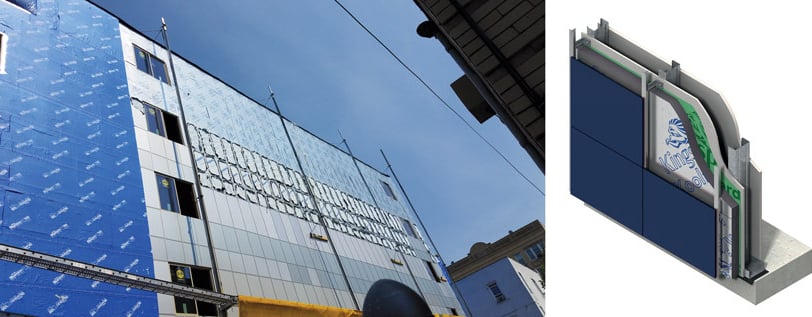Technology Driven Insulation for Modular Steel Panel Structures
Technology Driven Insulation for Modular Steel Panel Structures - Modular Home and Pool Express delves into the latest insulation stratagies.
Derek Vest Fort Myers
7/4/20243 min read


New Era of High-Performance Construction: A Deep Dive into High-Performance Insulation
Introduction
The construction industry is undergoing a transformation driven by a focus on sustainability and efficiency. While Modular Steel Panel construction offers remarkable flexibility and cost benefits, the key to maximizing these advantages over the long term lies in employing top-tier insulation. High-performance insulation is crucial in this shift, as it plays a significant role in reducing energy consumption and enhancing building functionality. This article explores the fundamentals of high-performance insulation, including its types, ratings, and its integral role in modern construction.
What is High-Performance Insulation?
High-performance insulation encompasses materials designed to offer exceptional thermal resistance, effectively impeding heat transfer. This type of insulation is essential for regulating indoor temperatures and minimizing the need for excessive heating or cooling. The effectiveness of high-performance insulation is measured by its R-value, which reflects its resistance to heat flow—the higher the R-value, the better the insulation’s performance.
What Constitutes Insulation Performance?
Insulation performance refers to a material's ability to enhance energy efficiency, soundproofing, and overall building health. It goes beyond just thermal resistance and includes factors like moisture control, fire resistance, and environmental impact. Effective insulation performance leads to reduced energy bills, improved indoor air quality, and advances in sustainable building practices.
What is the Most Effective Insulation?
The effectiveness of insulation depends on various factors, such as building requirements, climate conditions, and sustainability goals. Materials like polyurethane foam, fiberglass, and cellulose are popular choices. Polyurethane foam, for instance, is renowned for its high R-value per inch, making it a preferred option for both residential and commercial properties. However, new innovations continually emerge, offering even more efficient and performance-driven insulation solutions. For enhanced home comfort, consider external insulation and consult professional installers for best results.
What is the Highest Insulation Rating?
The highest insulation rating is determined by the R-value scale, which measures thermal resistance. Typically, R-values range from R-11 for standard wall insulation to R-38 or higher for attics in colder climates. Some advanced materials and technologies push these boundaries further, with specialized products achieving R-values as high as R-60. However, the ideal R-value depends on specific building needs and local climate conditions; a higher rating is not always universally best.
The Role of High-Performance Insulation in Sustainable Construction
High-performance insulation is crucial in the green building movement. It reduces energy consumption, which in turn lowers utility costs and carbon emissions—key factors in combating global warming. Sustainable construction is not only about the materials used but also about their long-term environmental impact. High-performance insulation contributes to this goal by being durable, often made from recycled materials, and having a minimal environmental footprint.
Technological Advances in High-Performance Insulation
The insulation sector is experiencing rapid technological advancements. Innovations such as vacuum insulation panels and aerogel-based materials provide higher R-values with thinner profiles. Additionally, there is a growing interest in natural and sustainable materials like sheep’s wool and recycled denim, which offer effective insulation while being environmentally friendly.
Choosing the Right Insulation for Your Building
Selecting the appropriate insulation is crucial for achieving optimal energy efficiency. Consider factors such as climate zone, building design, and specific space requirements. For instance, buildings in colder climates need insulation with a higher R-value to prevent heat loss. Additionally, consider aspects like moisture resistance and air tightness to enhance overall insulation performance.
Installation and Maintenance: Ensuring Optimal Performance
To fully benefit from high-performance insulation, proper installation and maintenance are essential. Incorrect installation can result in gaps, thermal bridging, and reduced effectiveness. Regular inspections for moisture, mold, and damage are important to maintain insulation efficiency over time.
The Future of Insulation in High-Performance Construction
The future of insulation in high-performance construction looks promising. Ongoing research and development are expected to bring forth even more innovative materials that offer greater efficiency, sustainability, and ease of installation. These advancements will be crucial in achieving global energy efficiency goals and reducing the environmental impact of the construction industry.
Conclusion
High-performance insulation is at the core of modern, energy-efficient construction. Understanding its types, performance metrics, and ratings is vital for those in the construction industry or anyone aiming to build an energy-efficient home. As technology evolves, we can look forward to increasingly advanced insulation solutions that will drive us toward a more sustainable future in construction.
All Rights Reserved: 2021-2024
Offices: Tampa - Istanbul - Hong Kong
